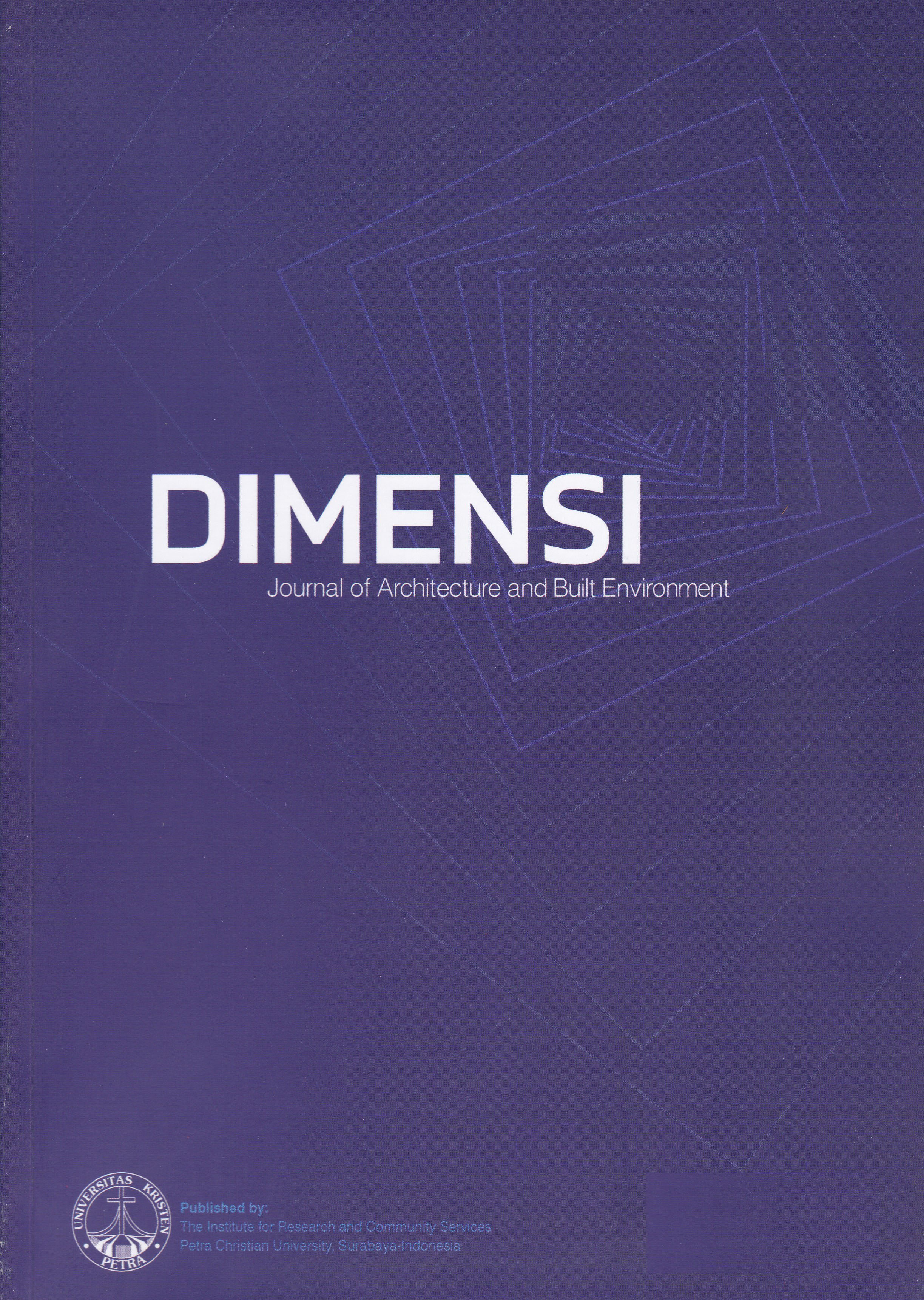RECESSED BALCONY HEAT RE-ENTRY EFFECT ON FAÇADE WITH CONDENSER UNITS
DOI:
https://doi.org/10.9744/dimensi.48.1.29-36Keywords:
Thermal comfort, CFD application, high-rise building, condenser, recessed balconyAbstract
The use of split-type air conditioner in Surabaya results in the almost universal typical apartment layouts which feature a recessed balcony upon the building’s exterior façade which then utilized as air-conditioner condenser unit storage. Façade geometry with recessed balcony itself carries its own characteristic of surface air movement which affects the general Indoor Air Quality (IAQ) and heat dissipation of a building. Nevertheless, façade as architectural elements greatly influence building’s energy performance. Inefficiencies in heat dissipation from a condenser unit is detrimental on its performance and precipitate energy wastage. Based on computational fluid dynamics (CFD) analysis incorporated with energy performance evaluation, the effectiveness of façade geometry with recessed balcony is explored in this paper. It was found that recessed balconies are not an ideal place for condenser unit placement on a façade where many factors contributed to promoting heat re-entry from condenser units into the building’s interior.
Downloads
References
Air Sealing your home (October 16, 2020). Retrieved from: https://www.energy.gov/energysaver/weatherize/air-sealing-your-home
Cammelli, S., & Mijorski, S. (2016). Stack Effect in High-Rise Buildings: A Review. Sofia: Inter-national Journal of High-Rise Buildings, 5(4), 327-338.
Chungloow, S., & Tienchutima, C. (2012). The Effect of Wing-Walls and Balcony on Wind Induced Ventilation in High-Rise Residential Units. Journal of Architectural/Planning Research and Studies (JARS), 8(1), 109-120.
Chow, T.T, Lin, Z., & Liu, J.P. (2002). Effect of Condensing Unit Layout at Building Re-Entrant on Split Type Air Conditioner Performance, Hong Kong: Energy Build, 34, 237 – 244.
Kisnarini, R., Krisdianto, J., & Indrawan, I.A., (2018). Contribution of Balcony of Rusunawa Surabaya on the Use of Space, Surabaya: IOP Conference Series: Earth and Environmental Science, 213 012039.
Mintorogo, D.S. (2003). Strategy Water Based Condenser: An Experimental Scale Model for Hybrid Passive Cooling Systems to Improve Indoor Temperature and Hot Water Utilities in Surabaya - Indonesia. Surabaya: Dimensi, Journal of Architecture and Built Environment, 31(2), 141-151.
Nada, S.A., & Said, M.A. (2017). Performance and Energy Consumptions of Split Type Air Conditioning Units for Different Arrangements of Outdoor Units in Confined Building Shafts. Egypt: Applied Thermal Engineering, 123, 874 – 890.
Ranasinghe, C. (2016). Analysis of the Heat Column Formation in a 10 Story Building. Sri Lanka: University of Moratuwa.
Republik Indonesia: Peraturan Menteri Pekerjaan Umum Nomor: 2/PRT/M/2006. Tentang Pedoman Persyaratan Teknis Bangunan Gedung.
Ribeiro, C., Ramos, N., & Flores-Colen, I. (2020). A Review of Balcony Impacts on the Indoor Environmental Quality of Dwellings. Lisboa, Portugal: MDPI Journal of Sutainability
Downloads
Published
How to Cite
Issue
Section
License
Authors who publish with this journal agree to the following terms:
- Authors retain copyright and grant the journal right of first publication with the work simultaneously licensed under a Creative Commons Attribution License that allows others to share the work with an acknowledgement of the work's authorship and initial publication in this journal.
- Authors are able to enter into separate, additional contractual arrangements for the non-exclusive distribution of the journal's published version of the work (e.g., post it to an institutional repository or publish it in a book), with an acknowledgement of its initial publication in this journal.
- Authors are permitted and encouraged to post their work online (e.g., in institutional repositories or on their website) prior to and during the submission process, as it can lead to productive exchanges, as well as earlier and greater citation of published work (See The Effect of Open Access).



















